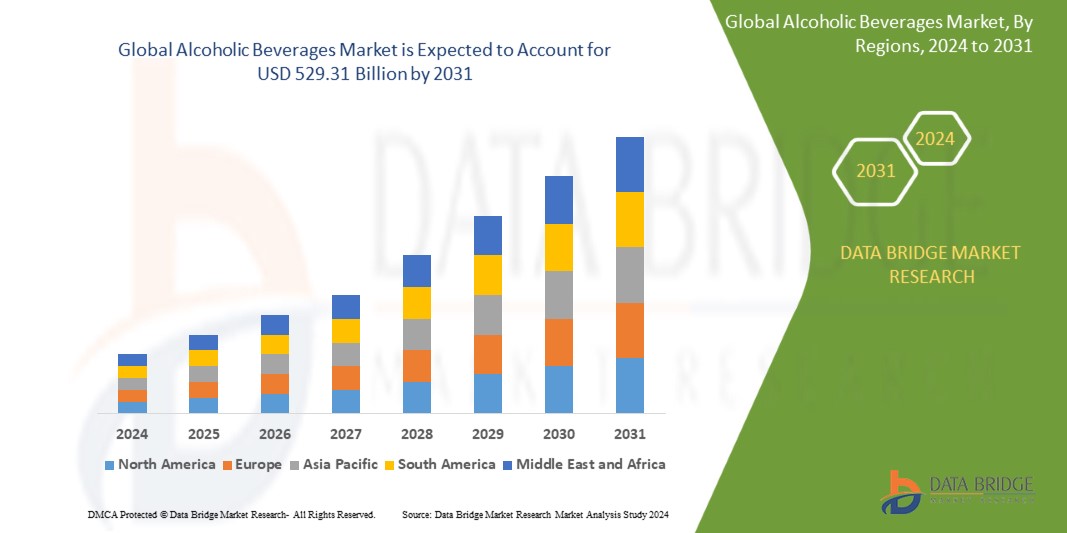Introduction
Alcoholic beverages are deeply intertwined with human culture, socialization, and tradition. From ancient times to the modern age, alcohol has played a pivotal role in celebrations, rituals, and even medicinal practices. Today, the global market for alcoholic beverages is vast, diverse, and continuously evolving with new trends, flavors, and consumption patterns. These beverages are created through the fermentation or distillation of sugars, grains, or fruits, resulting in various types of alcoholic drinks ranging from beers and wines to spirits and liqueurs.
In this blog, we will explore the different types of alcoholic beverages, the production processes behind them, their cultural significance, and the trends that are shaping the future of the industry.
Types of Alcoholic Beverages
Alcoholic beverages can be broadly categorized into three main types: beer, wine, and spirits. Each category represents a different method of production and offers a distinct taste, alcohol content, and cultural relevance.
1. Beer
Beer is one of the oldest and most widely consumed alcoholic beverages in the world. It is typically made from water, malted barley, hops, and yeast through a fermentation process. The alcohol content in beer generally ranges from 3% to 6% ABV (alcohol by volume), although some styles may have higher alcohol content.
- Types of Beer:
- Lagers: Lagers are fermented at cooler temperatures, resulting in a clean, crisp taste. Popular styles of lagers include Pilsners and Helles.
- Ales: Ales are fermented at warmer temperatures, creating a more robust flavor profile. Common styles of ales include IPAs (India Pale Ales), Stouts, and Porters.
- Craft Beer: Craft breweries focus on producing small-batch, artisanal beers with unique flavors and innovative ingredients. The craft beer movement has grown significantly, offering a wide variety of flavors and styles.
2. Wine
Wine is produced through the fermentation of grapes or other fruits, with varying flavors and characteristics depending on the grape variety, climate, and production methods. Wine is often categorized by color—red, white, and rosé—or by sweetness levels, such as dry, sweet, and semi-sweet.
- Types of Wine:
- Red Wine: Made from dark-colored grape varieties, red wines are known for their rich, bold flavors and tannins. Cabernet Sauvignon, Merlot, and Pinot Noir are popular examples.
- White Wine: White wines are typically lighter and more refreshing, made from green or yellow grapes. Popular varieties include Chardonnay, Sauvignon Blanc, and Riesling.
- Rosé Wine: Rosé wines are made from red grapes with minimal skin contact, resulting in a lighter color and flavor profile. Rosé has seen a surge in popularity due to its refreshing and versatile taste.
- Sparkling Wine: Sparkling wines, such as Champagne, Prosecco, and Cava, are carbonated and often associated with celebrations. These wines undergo a secondary fermentation process to create bubbles.
3. Spirits
Spirits are distilled alcoholic beverages with higher alcohol content, usually ranging between 40% and 50% ABV. Distillation involves heating the fermented liquid to separate the alcohol from the water and other components, resulting in a more concentrated alcoholic beverage.
- Types of Spirits:
- Whiskey: Whiskey is made from fermented grain mash (such as barley, corn, or rye) and aged in wooden casks. Popular varieties include Bourbon, Scotch, and Irish whiskey.
- Vodka: Vodka is a clear, distilled spirit that can be made from various raw materials, including potatoes, grains, or fruits. It is known for its neutral flavor and versatility in cocktails.
- Rum: Rum is made from sugarcane byproducts such as molasses or sugarcane juice. It is often aged in barrels, and varieties include white, dark, and spiced rum.
- Tequila: Tequila is made from the blue agave plant, predominantly grown in the Jalisco region of Mexico. The most common types of tequila are Blanco, Reposado, and Añejo.
- Gin: Gin is distilled from grain and flavored with botanicals, most notably juniper berries. It is a popular base for classic cocktails like the Martini and Gin and Tonic.
- Brandy: Brandy is distilled from wine or fermented fruit juice, often aged in wooden barrels for a rich, smooth flavor. Cognac and Armagnac are well-known types of brandy.
Production of Alcoholic Beverages
The production of alcoholic beverages involves fermentation, distillation, and aging, depending on the type of beverage. Below is an overview of the production processes for beer, wine, and spirits.
1. Beer Production
Beer is produced through the brewing process, which involves the following key steps:
- Malting: Barley grains are soaked in water and allowed to germinate, producing enzymes that convert starches into fermentable sugars.
- Mashing: The malted barley is mixed with hot water to extract sugars, creating a liquid called wort.
- Boiling: The wort is boiled, and hops are added for bitterness and flavor.
- Fermentation: Yeast is added to the cooled wort to ferment the sugars, producing alcohol and carbon dioxide.
- Conditioning: After fermentation, the beer is conditioned to develop flavor and carbonation before being packaged.
2. Wine Production
The production of wine begins with the harvest of grapes, followed by a series of steps that include:
- Crushing and Pressing: Grapes are crushed to extract juice. In red wine production, the skins are left in contact with the juice to extract color and tannins, while white wine juice is separated from the skins.
- Fermentation: Yeast is added to the grape juice to ferment the sugars into alcohol. Fermentation can take place in stainless steel tanks or oak barrels, depending on the desired flavor profile.
- Aging: Some wines are aged in barrels to enhance complexity and flavor, while others are bottled and sold immediately.
- Bottling: After aging, the wine is filtered and bottled for consumption.
3. Spirits Production
Spirits production begins with fermentation but includes the additional step of distillation:
- Fermentation: The raw materials (grains, fruits, or sugarcane) are fermented to create a “wash” or “mash” with low alcohol content.
- Distillation: The wash is heated in a still, and the alcohol is separated from the water through vaporization and condensation. The resulting liquid has a much higher alcohol content.
- Aging: Some spirits, such as whiskey and rum, are aged in barrels to develop flavor, while others, like vodka and gin, are bottled immediately after distillation.
Global Trends in the Alcoholic Beverage Industry
The global alcoholic beverage industry is constantly evolving, influenced by shifting consumer preferences, regulatory changes, and technological advancements. Some of the key trends shaping the industry include:
1. Premiumization
Consumers are increasingly gravitating toward premium and craft alcoholic beverages, seeking higher-quality products and unique experiences. This trend is evident in the growth of craft beer, small-batch spirits, and fine wines.
2. Health and Wellness
The rise of health-conscious consumers has led to an increase in demand for low-alcohol, alcohol-free, and organic beverages. Companies are innovating to produce alcohol alternatives that cater to those looking for a healthier lifestyle without sacrificing flavor.
3. Sustainability
Sustainability has become a priority for many beverage producers. From sourcing raw materials ethically to reducing carbon footprints and using eco-friendly packaging, companies are embracing sustainability practices to meet consumer demands and regulatory pressures.
4. Craft Beverages
The craft beverage movement, which started with beer, has now spread to spirits and wine. Consumers are drawn to small-batch, artisanal products that offer distinctive flavors and stories. Craft distilleries, wineries, and breweries are flourishing worldwide as a result.
5. E-Commerce and Direct-to-Consumer Sales
The COVID-19 pandemic accelerated the shift toward online sales of alcoholic beverages. E-commerce platforms and direct-to-consumer models have made it easier for consumers to purchase alcohol from the comfort of their homes, and this trend is expected to continue growing.
6. Ready-to-Drink (RTD) Cocktails
Ready-to-drink (RTD) cocktails have seen significant growth in recent years, offering convenience and high-quality ingredients in a pre-packaged format. These beverages appeal to consumers looking for sophisticated drinks without the need for mixing.
7. Experiential Drinking
Consumers are increasingly seeking unique experiences when it comes to drinking. This has led to the rise of experiential bars, distillery tours, wine-tasting events, and immersive cocktail experiences that go beyond simply consuming a beverage.
Conclusion
Alcoholic beverages have long been a part of human culture and continue to evolve in response to changing consumer preferences, technological innovations, and global trends. From craft beer and fine wine to premium spirits and ready-to-drink cocktails, the alcoholic beverage industry offers a wide range of products that cater to diverse tastes and occasions.
As consumers become more health-conscious, environmentally aware, and experience-driven, the industry will continue to adapt and innovate, ensuring that alcoholic beverages remain a central part of social and cultural life for years to come. Whether you’re enjoying a glass of fine wine, sipping a craft cocktail, or exploring the latest trends in alcohol-free alternatives, there’s no doubt that the world of alcoholic beverages.




